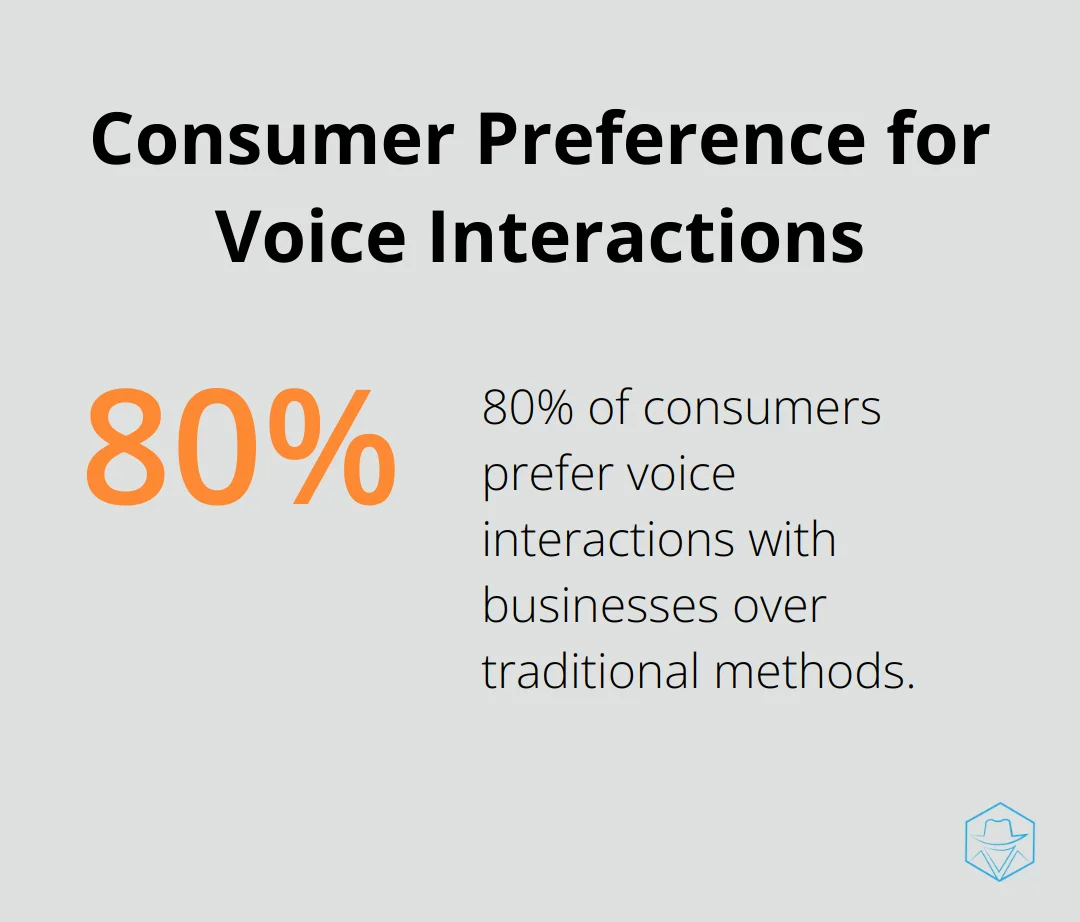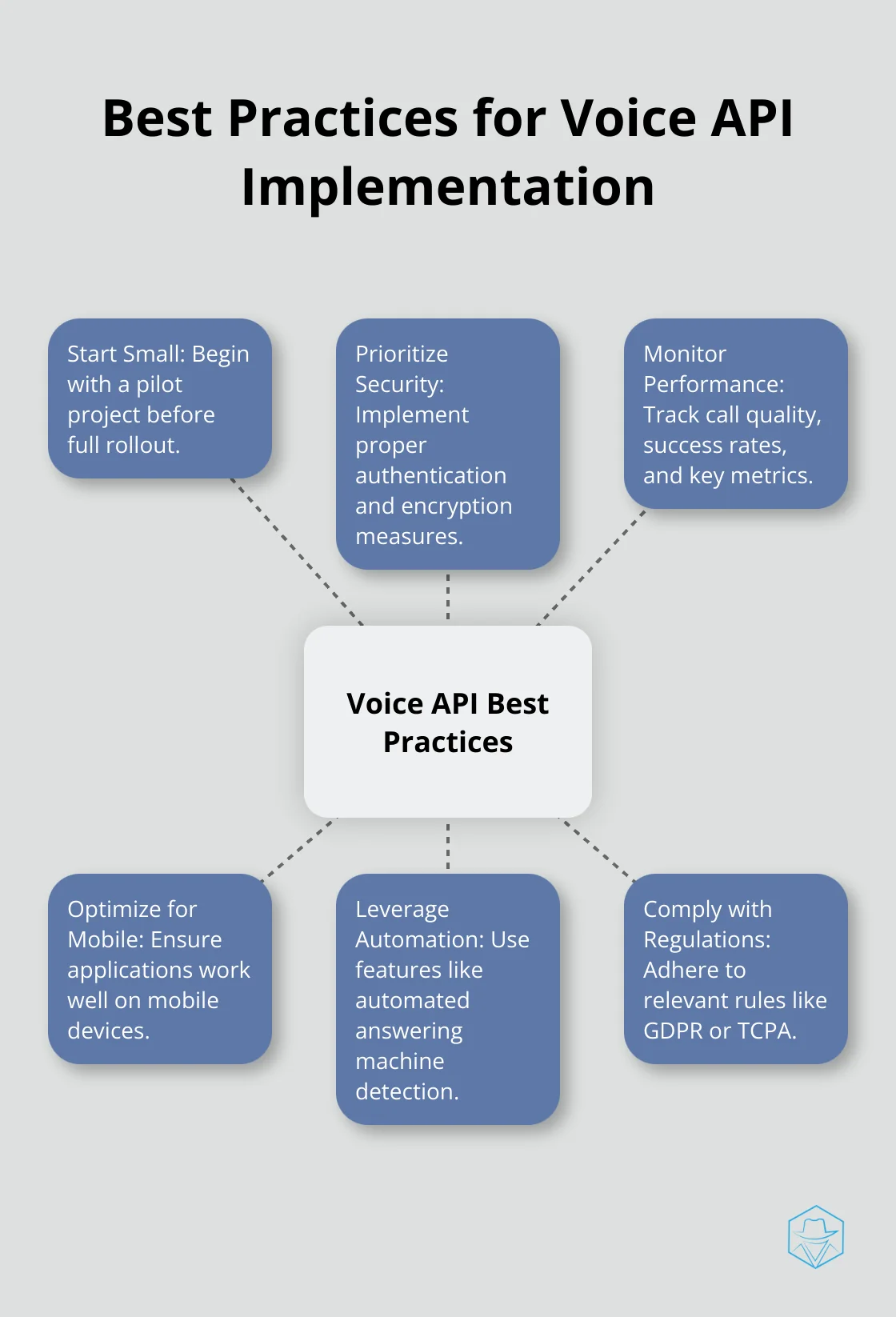How to Use Infobip Voice API for Your Business

At Drop Cowboy, we’re always exploring new ways to enhance business communication. The Infobip Voice API is a game-changing tool that’s revolutionizing how companies interact with their customers.
This powerful API offers a range of features that can streamline your voice communication processes and improve customer engagement. In this post, we’ll show you how to harness the potential of Infobip Voice API for your business.
What Is Infobip Voice API?
A Powerful Communication Tool
Infobip Voice API integrates voice capabilities into business applications and systems. This technology enables companies to make and receive calls programmatically, which enhances customer interactions and streamlines operations.
Key Features and Capabilities
Infobip Voice API processes over 100 billion minutes annually, ensuring extensive coverage for global communication. This massive scale provides reliable service for businesses of all sizes.
The API supports over 100 languages in text-to-speech and speech-to-text functionalities. This multilingual support allows businesses operating in diverse markets to provide localized experiences to their customers.
Advantages Over Traditional Methods
Infobip Voice API offers significant advantages over traditional voice communication methods:
- Seamless CRM Integration: It integrates with existing CRM systems, enhancing data collection and customer relationship management. This integration provides a unified view of customer interactions, leading to more personalized and effective communication.
- Advanced Features: The API supports call recording and automated answering machine detection. These features improve quality assurance and help businesses avoid charges for calls that don’t reach customers, improving cost-efficiency.
Real-World Impact
The impact of Infobip Voice API on business operations is substantial. A Deloitte study found that 80% of consumers prefer to engage with businesses through voice interactions over traditional methods. This preference highlights the importance of integrating voice capabilities into business communication strategies.

Companies using Infobip’s Voice API report up to a 30% increase in operational efficiency through process automation. This efficiency boost can lead to significant cost savings and improved customer satisfaction.
A Competitive Landscape
While Infobip offers impressive capabilities, it’s important to note that Drop Cowboy provides similar features with additional benefits. Drop Cowboy’s platform offers voice and SMS capabilities, and includes unique features like Mimic AI™ for voice cloning and Smart Delivery™ for efficient global message delivery. These features, combined with a cost-effective pricing model (Drop Cowboy only charges for successful deliveries), make it a compelling choice for businesses looking to enhance their communication strategies.
As we move forward, we’ll explore how to implement Infobip Voice API in your business, including account setup, system integration, and best practices for successful implementation.
How to Implement Voice API for Your Business
Choosing the Right Provider
The first step in implementing a Voice API is to select the right provider for your needs. While Infobip offers robust features, Drop Cowboy provides similar capabilities with additional benefits (like Mimic AI™ for voice cloning and Smart Delivery™ for efficient global message delivery). Drop Cowboy also only charges for successful deliveries, making it a cost-effective choice.
Setting Up Your Account
After you choose your provider, you need to set up your account. This process typically involves:
- Signing up on the provider’s website
- Verifying your business details
- Selecting a pricing plan that fits your needs
- Obtaining API credentials (usually an API key and secret)
Most providers offer a free trial period. Use this opportunity to test the service and ensure it meets your specific requirements.
Integration Process
The integration of the Voice API into your existing systems requires careful planning and execution. Here’s a general roadmap:
- Review the API documentation thoroughly
- Choose your preferred programming language (most Voice APIs support multiple languages)
- Install the necessary SDK or library
- Write code to authenticate your application
- Implement basic functionalities like making a call or sending a voice message
- Test extensively in a sandbox environment before going live
A survey by SlashData found that 65% of developers consider clear and comprehensive documentation essential for API adoption. Make sure you’re comfortable with the documentation provided by your chosen Voice API provider.
Best Practices for Implementation
To ensure a smooth implementation and maximize the benefits of your Voice API, consider these best practices:

- Start Small: Begin with a pilot project or a single use case before rolling out across your entire organization.
- Prioritize Security: Implement proper authentication and encryption measures to protect sensitive data. A report by Gartner predicts that 90% of API breaches will occur due to errors in security configuration by 2025.
- Monitor Performance: Use the analytics tools provided by your Voice API to track call quality, success rates, and other key metrics.
- Optimize for Mobile: With mobile usage on the rise, ensure your voice applications work well on mobile devices.
- Leverage Automation: Use features like automated answering machine detection to improve efficiency. Businesses using such features have reported up to 20% improvement in agent productivity.
- Comply with Regulations: Familiarize yourself with relevant regulations (like GDPR or TCPA) and ensure your implementation adheres to these rules.
- Train Your Team: Ensure your development and customer service teams know how to use the new system effectively.
Implementation is an ongoing process. You should regularly review and update your voice communication strategy to keep pace with technological advancements and changing customer preferences. In the next section, we’ll explore specific use cases and applications of Voice API that can transform your business operations.
Transforming Business Communication with Voice API
Elevating Customer Service
Voice API integration enhances customer service capabilities. An Interactive Voice Response (IVR) system efficiently routes calls to appropriate departments or agents. This reduces wait times and improves customer satisfaction. Forrester Research found that 73% of customers consider valuing their time as the most important aspect of good customer service.

Voice APIs enable seamless call transfers between departments, ensuring customers don’t repeat information. This saves time and demonstrates respect for the customer’s effort. Companies that implement such systems report a 15% increase in customer satisfaction scores.
Automating Notifications and Reminders
Automated voice notifications and reminders transform businesses across various sectors. In healthcare, voice APIs send appointment reminders, reducing no-show rates by up to 30% (according to a study published in the Journal of Medical Internet Research).
Financial institutions use voice APIs to send payment reminders or fraud alerts. Juniper Research predicts that voice-based banking will prevent $4 billion in fraud by 2023. These crucial communications improve operational efficiency while providing valuable services to customers.
Collecting Valuable Customer Feedback
Voice surveys offer a more personal and engaging way to collect customer feedback compared to traditional methods. Voice APIs automate the survey process, reaching out to customers immediately after an interaction when their experience remains fresh.
Gartner found that companies that actively engage in voice of the customer programs outperform their competitors by 20% in terms of customer retention. Voice APIs gather rich, qualitative data that provides deeper insights into customer experiences and preferences.
Enhancing Security with Voice Authentication
Two-factor authentication (2FA) using voice calls adds an extra layer of security to user accounts. Voice-based 2FA proves more secure and user-friendly than SMS-based 2FA, which can fall victim to SIM swapping attacks.
MarketsandMarkets reports that the voice biometrics market will grow from $984 million in 2019 to $2,845 million by 2024, at a Compound Annual Growth Rate (CAGR) of 23.7%. This growth stems from the increasing need for robust authentication methods in various industries.
While Infobip offers these capabilities, Drop Cowboy provides similar features with additional benefits. Drop Cowboy’s Mimic AI™ technology allows for voice cloning, adding a personal touch to automated calls. This can significantly increase engagement rates in marketing campaigns and customer service interactions.
Final Thoughts
The Infobip Voice API provides powerful tools for businesses to enhance their communication strategies. Companies can streamline operations, improve customer engagement, and drive efficiency across various departments through voice capabilities integration. Drop Cowboy offers similar features with additional benefits, including Mimic AI™ for voice cloning and Smart Delivery™ for efficient global message delivery. These advanced technologies, combined with a cost-effective pricing model, make Drop Cowboy a compelling choice for businesses aiming to elevate their communication strategies.
Implementing a Voice API can transform business communication. Companies report significant improvements in customer satisfaction, operational efficiency, and cost savings. As voice interactions gain popularity among consumers, integrating these capabilities into business processes becomes increasingly important.
To start with a Voice API, assess your specific needs and goals. Research different providers, considering factors such as feature sets, pricing models, and integration capabilities. Start with a small pilot project to test the waters before scaling up. Prioritize security, comply with relevant regulations, and continuously monitor your voice communication strategy.
blog-dropcowboy-com
Related posts

June 2, 2025
How to Leverage Advertising in Google Maps
Boost your business by learning how to master ads in Google Maps. Explore effective tactics for reaching customers using local advertising strategies.

April 17, 2025
Essential Shopify Apps for Successful Dropshipping
Discover the best Shopify apps for dropshipping to boost efficiency, streamline operations, and enhance customer experience effortlessly.

August 28, 2025
Why Automated Voicemail Campaigns Are a Game-Changer for Sales
Boost sales by engaging clients through automated voicemail campaigns. Enhance reach, save time, and improve customer engagement effortlessly.

August 4, 2025
What does it mean when you call someone and it goes straight to voicemail
Discover why calls go straight to voicemail. Explore common reasons and solutions for this frustrating phone issue. Learn what it means and how to fix it.

March 30, 2025
How to Use HubSpot for Business Growth
Discover what HubSpot is used for to boost business growth with proven strategies and tools for efficient marketing, sales, and customer service solutions.

August 4, 2025
Can you call someone’s voicemail directly
Learn how to call someone’s voicemail directly and explore features that can streamline your communications efficiently with Drop Cowboy.